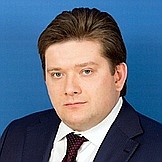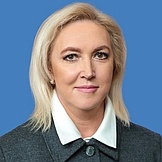Regional flags and emblems


Profile
Established 13 July 1944
Capital Kostroma
The Kostroma Region is part of the Central Federal District
Area 60,200 sq km
Population 560 800 (2025)
Ethnic groups
(2020 National Census, %)
Russian – 96,11
Other – 3,89
Administrative divisions (2024)
Municipal areas – 14
Municipal districts – 10
City districts – 5
Rural towns – 8
Rural districts – 77
Geography and climate
The Kostroma Region lies at the heart of European Russia within the East European Plain. Configuration of terrain: a hilly plain. The Kostroma depression is located in the western part of the region, and the Galichsko-Chukhlomskaya elevation, which reaches 292m, is in its central part. The Unzhinskaya lowland stretches along the lower part of the Unzha River. A chain of hills called the Northern Ridge is located in the south-east.
The Region borders on the Ivanovo, Yaroslavl, Vologda, Kirov, and Nizhny Novgorod regions.
The main rivers are the Volga and its tributaries such as the Kostroma and Vetluga, among others. There are some 50 lakes. The largest lakes and reservoirs are Galichskoye Lake, Chukhloma Lake, and the Gorky Reservoir.
The climate is temperate continental. January temperatures average −9.0°C; July temperatures average 15.5°C. Average precipitation in January is 54 mm; in July − 147 mm. The vegetation period is between 110 and 140 days.
Government
The legislative branch is represented by the Kostroma Regional Duma, which is the permanent, representative and only body of legislative authority in the region.
The Kostroma Regional Duma has 35 deputies elected for five years, with 25 of them running in single-mandate constituencies and the other 10 in the single electoral district, where winners are identified in proportion to the number of votes cast for lists of deputies nominated by electoral associations.
The current Kostroma Regional Duma was elected in September 2020. Its term expires in September 2025.
The executive branch in the Kostroma Region is represented by the Governor of the Kostroma Region, the Administration of the Kostroma Region and other executive agencies of the region. The Administration of the Kostroma Region, the supreme and permanent body of executive authority in the region, has its own competences.
The Governor of the Kostroma Region is the region’s highest-ranking official, who heads the supreme executive body of the Kostroma Region – the Administration of the Kostroma Region and determines the guidelines for its work.
He is elected for five years by Russian citizens who permanently reside in the region. The term of office of the current incumbent expires in September 2025.
Economy and natural resources
Industrial output accounts for about 30% of the Kostroma Region’s GDP.
The region is an industrial and agricultural center that generates more electricity than the region needs. Its traditional industries are forestry, electricity generation, engineering, shipbuilding, jewelry, and textiles.
The surplus of electricity produced in the Region means that it is viable to locate energy-demanding production there. Reliable provision of energy is ensured by the Kostromskaya Hydroelectric Power Station one of Russia’s largest and most economical power stations.
The production of jewelry and textiles are traditional industries for the Kostroma Region. The region is responsible for 40% of all jewelry products in Russia. Large manufacturers, such as Krasnoselsky Yuvelirpom and the Kostroma Jewelry Plant are renowned. Over a third of the nation-wide flax output is produced in the Kostroma Region. The region is home to several major companies, such as the New Kostroma Linen Manufacture, the Kostroma Manufacture, which produces cotton, and the Moscow Wool-Spinning Factory.
The region has the largest timber reserves in European Russia. Timber industry products dominate regional exports. The authorities seek to create timber industry clusters with an emphasis on comprehensive and zero-waste production cycle.
Engineering and shipbuilding play a key role in the regional economy and have distinguished themselves nationwide. Wide diversification is a prominent feature of these industries.
Agriculture is an important industry for the regional economy that accounts for about 9%of the regional GDP. It focuses on crop-farming, dairy and beef cattle breeding. The climate is favorable for growing grass which provides the livestock industry with sufficient fodder.
Culture and tourism
The Kostroma Region occupies a prominent place in the Golden Ring of Russia tourist tour. The Region is home to 11 museums and 16 branches of museums, 5 theatres and concert halls, over 400 palaces of culture and other cultural centers.
It is a beautiful land of lakes and forests with an ancient history, which preserves its numerous landmarks, age-old traditions, memory of outstanding past events and of people who honored the country with their work and courage on the battlefields of the Great Patriotic War. The region is well-known in Russia and abroad as the land of cheese, flax and jewelry, while its ancient capital is said to be the birthplace of Ded Moroz’s (Father Christmas) granddaughter, Snegurochka.
It was here, by the walls of the Ipatiev Monastery, that the founder of the Romanov Dynasty, Mikhail Romanov, was pronounced Tsar, ushering in an end to the Time of Troubles, as the country entered a new era. It was in this region that Russian patriot Ivan Susanin performed his unparalleled feat, when he intentionally led Polish invaders into the depths of the forest swamps where they lost their way and perished. A constellation of outstanding people that made Russia proud were born in the region, including Soviet Marshal Alexander Vasilevsky, Far East explorer, Admiral Nevelskoi, founder of Russia’s first theatre Fyodor Volkov, educator and publisher Ivan Sytin, and playwright Viktor Rozov. Beautiful ancient monasteries attract more and more tourists.
Rich natural resources make the Kostroma Region a place to go and relax and experience a healthy environment. The region’s peat muds, mineral springs, clean air and natural food products are very popular with the Russians. The Ivan Susanin Sanatorium, the Pavel Borodin Sanatorium, the Shchyolykovo Sanatorium, the Volga Lunyovo Sanatorium, and the Kolos and Volga health resorts have achieved nation-wide fame.


